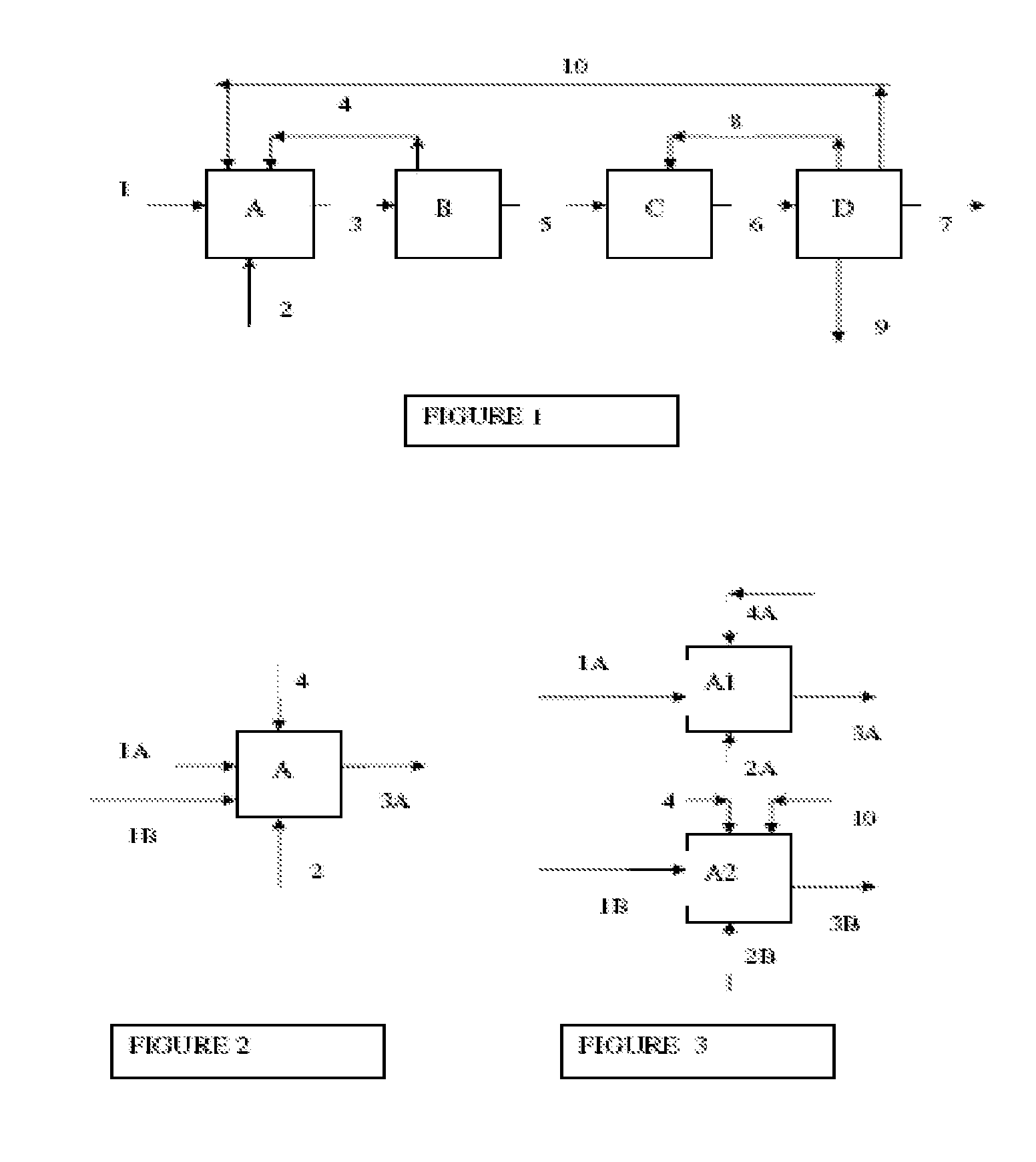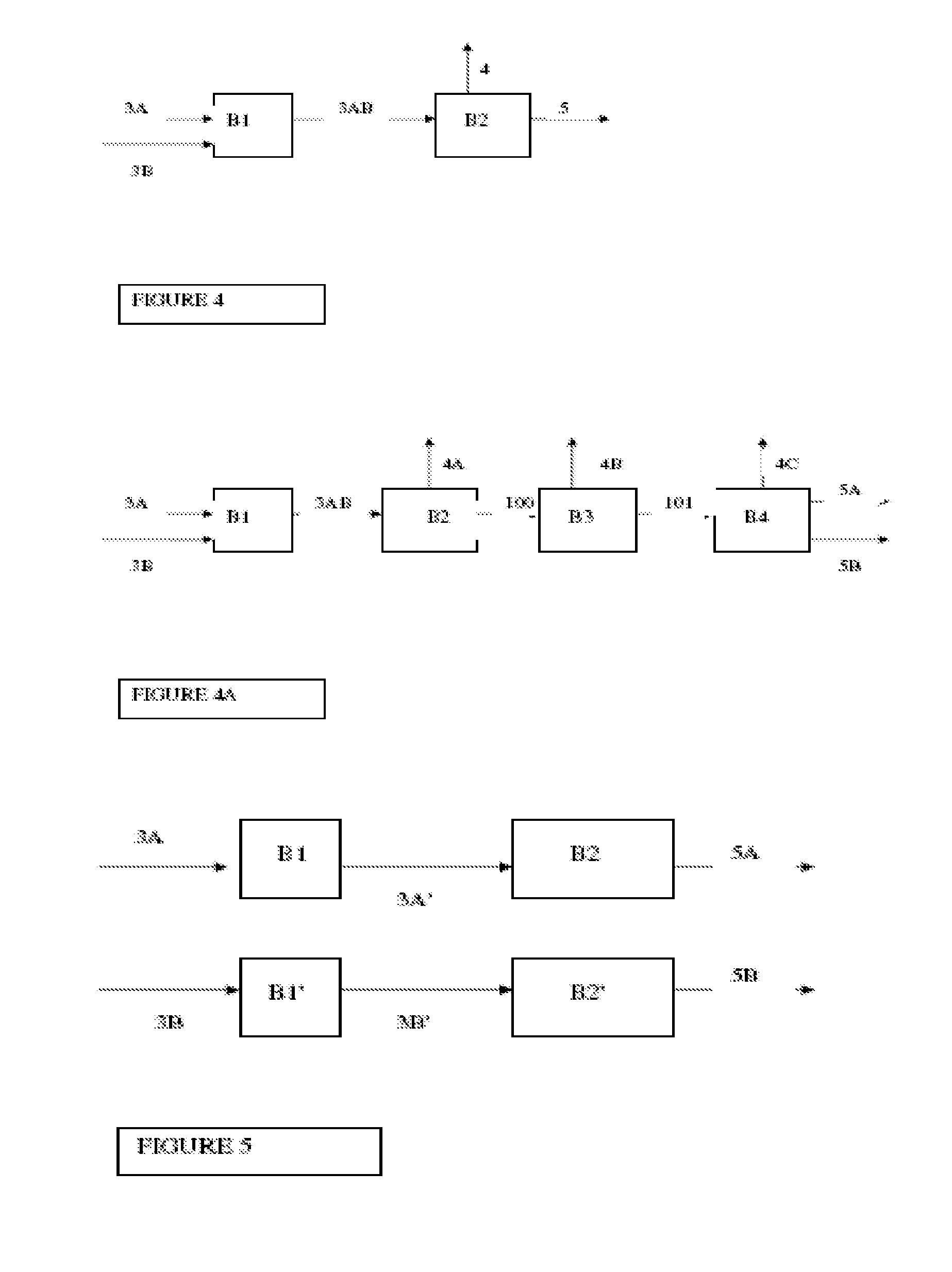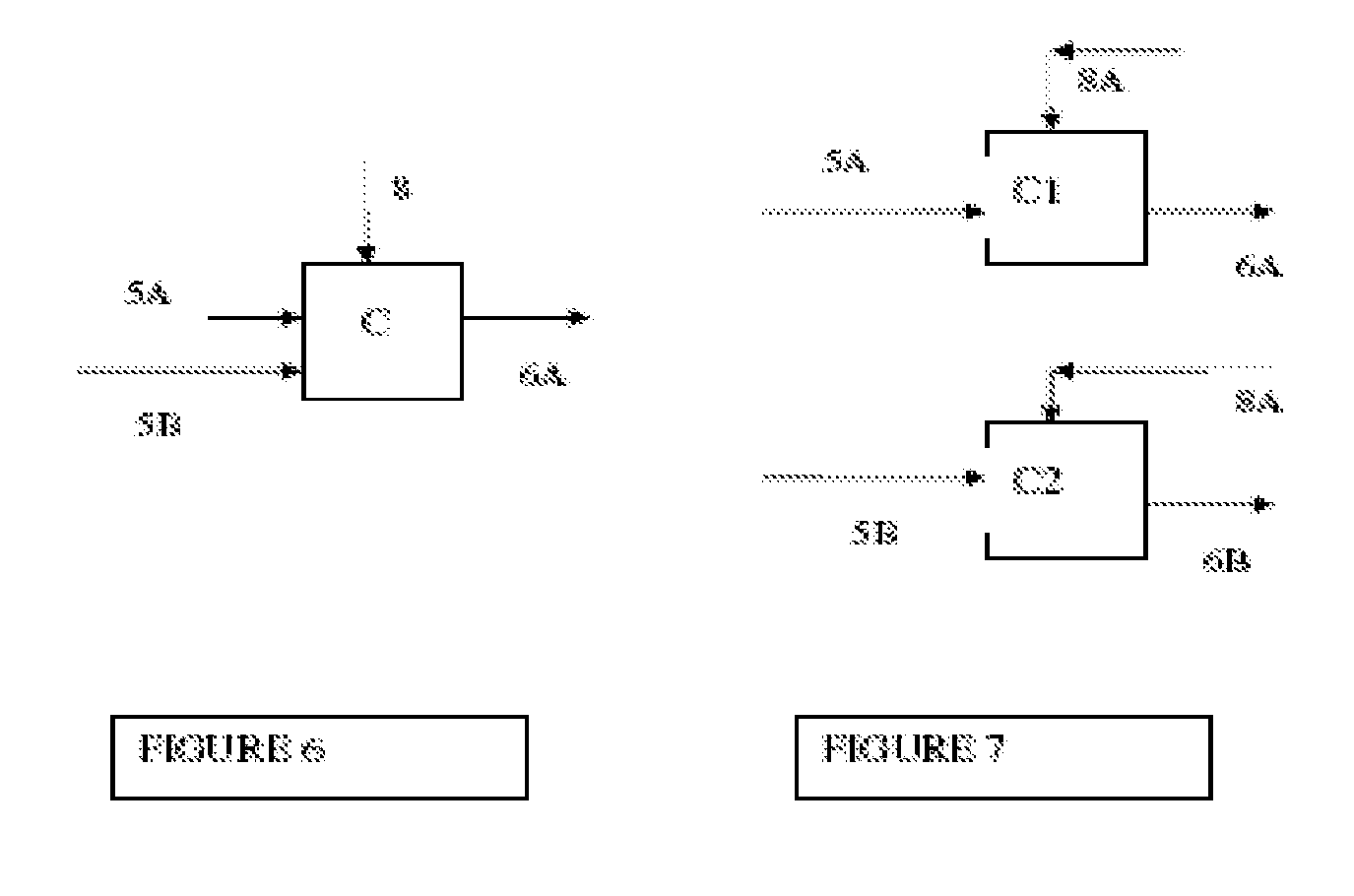Integrated process for the manufacture of fluorinated olefins
a technology of fluorinated olefins and integrated processes, which is applied in the field of processes for producing haloalkenes, can solve the problems of low cost associated with design and operation of complex and highly specialized separation equipment, and achieve the effects of increasing the cost efficiency of dehydrohalogenation production, reducing cost and increasing efficiency
- Summary
- Abstract
- Description
- Claims
- Application Information
AI Technical Summary
Benefits of technology
Problems solved by technology
Method used
Image
Examples
example 1
[0088]A CSTR (Continuously Stirred Tank Reactor) was used to convert 245eb to 1234yf. The reactor was designed and operated in such a way that the end of the dip tube was in the middle of KOH phase. After the startup, organic and fresh KOH were constantly fed in. Organic out (the overhead portion) was constantly taken out. In a typical cycle organic and KOH flow in and overhead is taken out for 30 min. Flowrates were 5 and 12 ml / min, respectively. The mixture is stirred during this period of time. Then stirrer is stopped for 10 min, while feeds still go in. While stirrer is off, after 10 min, applicable valves for the spent KOH to go out were open. Between 500 and 550 g was taken out every 40 min.
[0089]Experiment was carried out for 7 hours. Temperature was 48° C. Pressure was 45 psig. GC area percent of the organic feed was ˜97% of 245eb, the rest being most probably 254. The flowrates translate to mol ratio of KOH to G-245eb of 1, or slightly above 1. Theoretical residence time wa...
example 2
[0092]The second experiment was carried out in the same fashion as the experiment 1, except that pressure and temperature were 48 psig and 47° C. Experiment lasted 6 hours and overall conversion was 69%. Selectivity to 1234yf was 75%.
example 3
[0093]Reactor was loaded with 807 ml of organic. The feed was analyzed by GC to reveal Area % for 236ea as 97.70%. There was no 1234yf in this feed, while the percentage of 1225ye was 0.03. After loading the reactor with organic, 1641 ml of 25% KOH was added. Therefore mol ratio of KOH to 236ea was 1.23.
[0094]The flowrates of 236ea and KOH were 2 and 4 ml / min. Pressure was 35-45 psig. Reactor temperature was 42-45° C.
[0095]Spent KOH was taken out of reactor periodically (it was fed continuously as was organic; overhead product was taken out continuously, i.e. semi-continuous operation). In this semi-continuous mode KOH and organics flowed into stirred reactor for 50 min. Then the stirrer was stopped for 10 min while reactants were still going in. Afterwards 290-300 g of spent KOH was taken out. Then stirrer was started as was the clock for 50 min time period.
[0096]Spent KOH was collected in Scrubber Product Collection Cylinder (SPCC). SPCC was pre-filled with methylene chloride (the...
PUM
| Property | Measurement | Unit |
|---|---|---|
| phase separation | aaaaa | aaaaa |
Abstract
Description
Claims
Application Information
 Login to view more
Login to view more - R&D Engineer
- R&D Manager
- IP Professional
- Industry Leading Data Capabilities
- Powerful AI technology
- Patent DNA Extraction
Browse by: Latest US Patents, China's latest patents, Technical Efficacy Thesaurus, Application Domain, Technology Topic.
© 2024 PatSnap. All rights reserved.Legal|Privacy policy|Modern Slavery Act Transparency Statement|Sitemap



